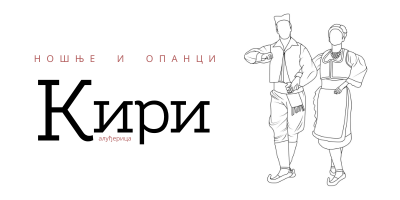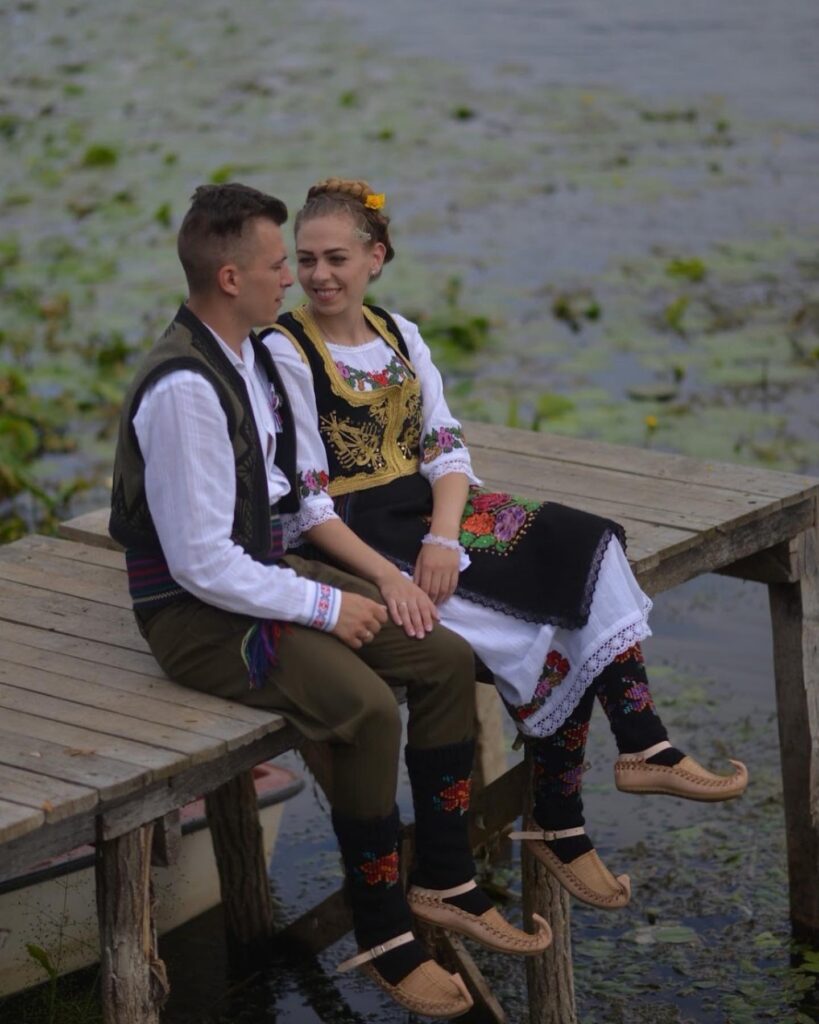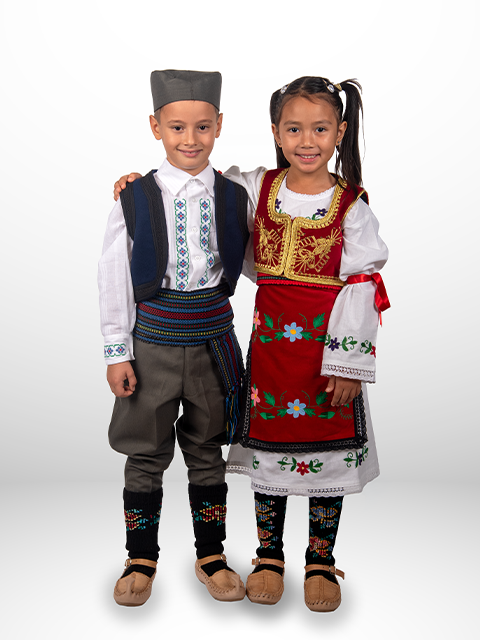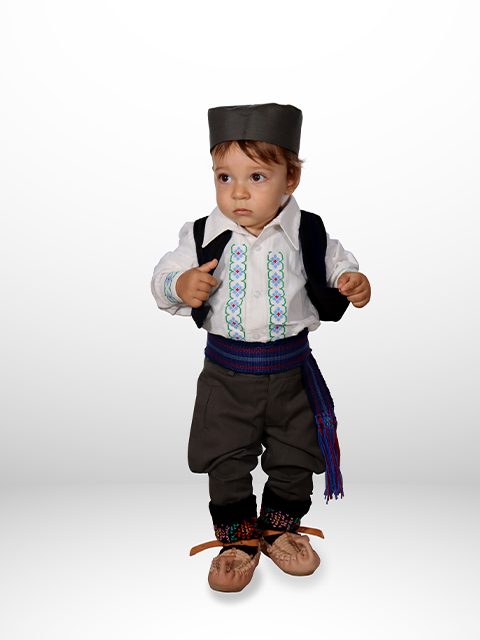The Importance of Serbian Traditional Clothing
Serbian traditional clothing, known as narodna nošnja, is not only a way of dressing but a powerful cultural symbol. From weddings and church celebrations to folklore performances and festivals, these costumes keep traditions alive both in Serbia and abroad. For the Serbian diaspora in the USA, Canada, Australia, and across Europe, owning authentic Serbian folk costumes is a way to preserve identity and heritage.
Symbolism in Every Detail
Beyond beauty, Serbian costumes carried meaning. Colors and embroidery patterns symbolized fertility, prosperity, or protection from evil. Jewelry often represented family wealth and was passed down as heirlooms. Women’s aprons and blouses displayed intricate designs that told stories of their community, while men’s wide leather belts represented strength and readiness to defend the family.
History of Serbian Folk Costumes
Origins and Regional Differences
Serbian national costumes date back centuries. Each region of Serbia developed unique styles, fabrics, and colors. Costumes were influenced by local climate, historical events, and even trade routes.
- Šumadija – Wool skirts, embroidered aprons, black vests
- Vojvodina – Bright colors, silk headscarves, floral embroidery
- Kosovo and Metohija – Rich gold-thread decorations, heavy jewelry
- Eastern Serbia – Woolen garments, thick belts, traditional hats
These regional variations make Serbian folk clothing one of the most diverse traditions in the Balkans.
Symbolism in Serbian Costumes
Every detail had meaning: embroidery patterns symbolized fertility or protection, colors reflected wealth and occasion, while jewelry often served as family heirlooms. Costumes were worn with pride during important events like weddings, harvest festivals, and religious holidays.
Opanci – The Iconic Serbian Shoes
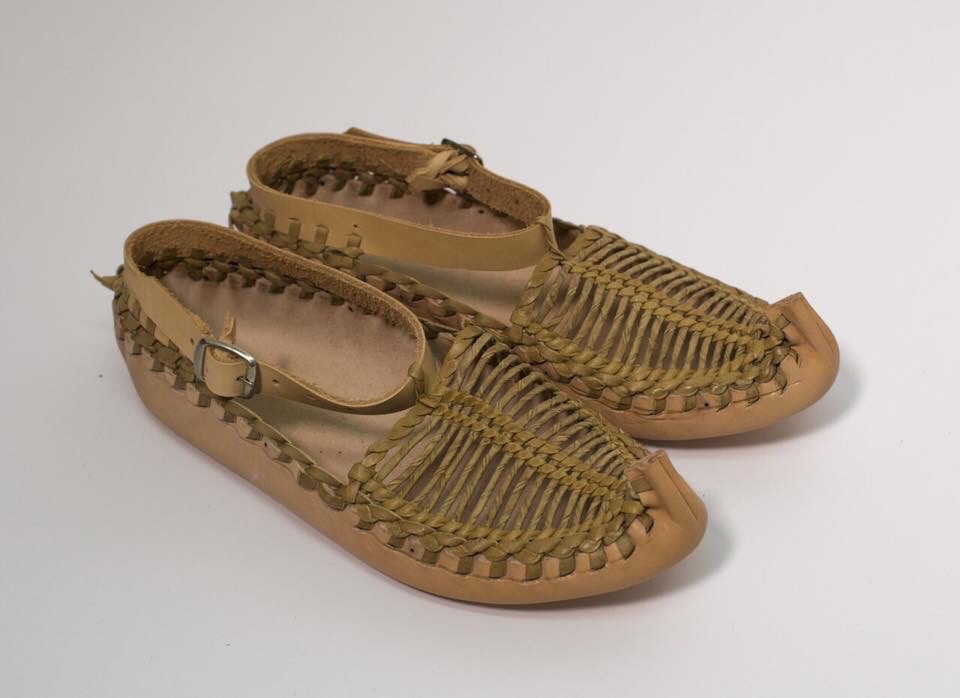
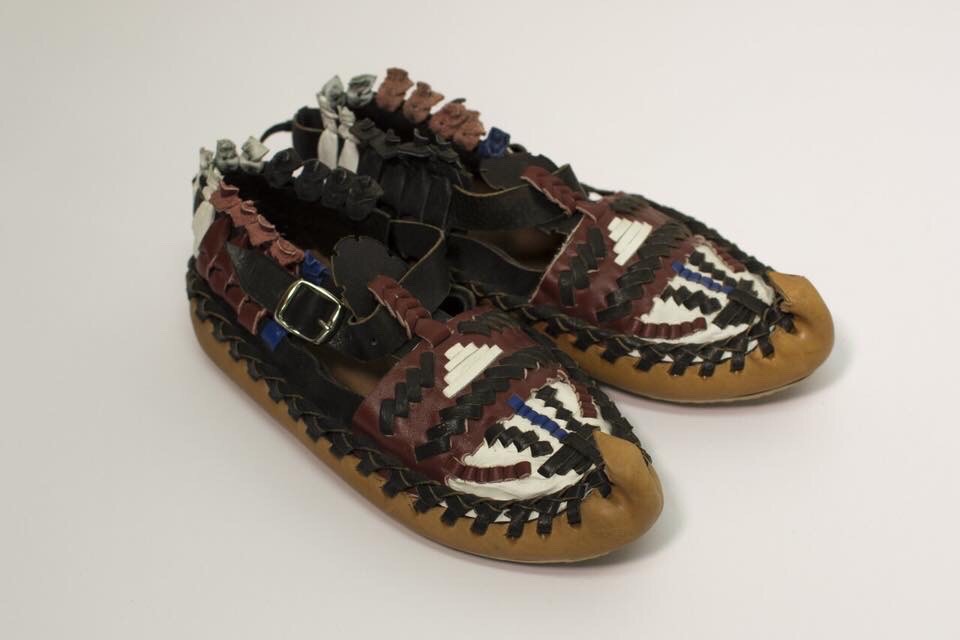
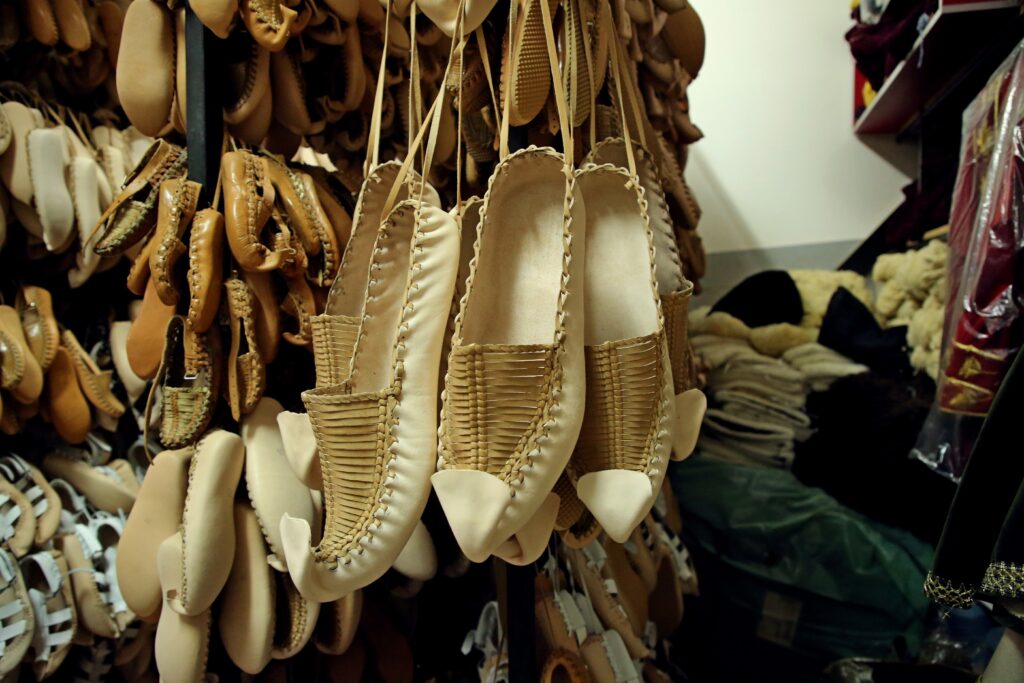
What Are Opanci?
Opanci are traditional Serbian shoes made of leather, easily recognized by their curved tips. They are among the oldest types of footwear in the Balkans.
Why Opanci Are Important
- Worn daily by farmers and villagers for centuries
- Essential part of every Serbian folk costume
- Still handmade today using traditional methods
- Popular among folklore dance groups worldwide
Owning opanci shoes means having a direct link to Serbia’s past and identity.
Why Serbian Costumes Matter to the Diaspora
Serbs living abroad often look for authentic clothing for:
- Weddings – many couples wear traditional pieces during ceremonies
- Folklore Ensembles – dance groups perform in national costumes
- Church Celebrations – Vidovdan, Christmas, and Easter gatherings
- Cultural Festivals – showcasing Serbian heritage internationally
For younger generations born abroad, wearing Serbian costumes helps them connect to their roots.
Buying Authentic Serbian Folk Costumes Online
Finding genuine Serbian costumes outside Serbia is often difficult. Luckily, we offer:
- Full men’s and women’s folk costumes
- Handmade opanci shoes in all sizes
- Children’s traditional outfits
- Custom-made costumes for folklore ensembles
- Worldwide delivery to the USA, Canada, Australia, and Europe
- Buying directly from Serbian artisans ensures authenticity and supports the preservation of traditional crafts.
How to Care for Serbian Traditional Clothing
Because these costumes are handmade from natural fabrics, proper care is essential:
- Wool pieces – store in dry spaces, avoid moths
- Embroidered blouses – wash gently, avoid bleach
- Opanci shoes – keep away from moisture, polish with natural oils
With the right care, a costume can last for decades and be passed down to future generations.
Conclusion – Wear Your Heritage with Pride
Serbian folk costumes are more than just clothes – they are living history. From embroidered aprons to handmade opanci, every piece tells a story of identity, pride, and belonging. Thanks to worldwide delivery, every Serbian abroad can celebrate tradition, whether at a wedding in Toronto, a folklore show in Chicago, or a cultural festival in Sydney. Wearing Serbian traditional clothing means keeping culture alive for generations to come.
